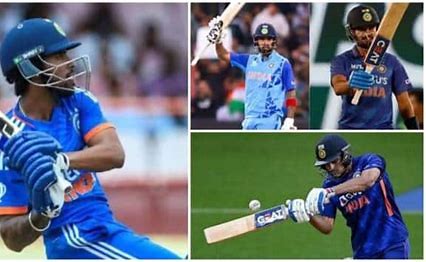A few weeks to go for the ODI World Cup, Team India looks far from a settled, let alone formidable, unit. The experiments with different players and combinations in recent times and the mixed success achieved thereof have yielded more confusion than solutions. With an appreciable pool of new talent, India was said to have a problem of plenty; now it’s turning out into a burden of plenty.
The twin problems – match-readiness of players recovering from injury and T20 players untested in the longer formats – leave the team shaky. While the upcoming Asia Cup is likely to provide us a glimpse of the team for the World Cup, it might also take the confusion forward. The short West Indies tour hardly offered any clear indication of specific players in specific roles in the 50-overs format. Worse, it exposed glaring weaknesses in both bowling and batting departments. One can only hope things look better during the Asia Cup.
So far only six players look certain in the playing XI. They are skipper Rohit Sharma, Virat Kohli, Ravindra Jadeja, Hardik Pandya, Mohd Shami and Mohd Siraj. Jasprit Bumrah, KL Rahul and Shreyas Aiyer – all just back from injury layoff – are certainties but they will need to prove their match-readiness with solid performances in the Asia Cup. The team management will be required to give full exposure to these three through the short fixture. But what if they look out of touch? The team would go back to IPL finds, talented but short on maturity.
The Indian Premier League has unearthed a bunch of gifted batsmen who can deliver cracking knocks to take the game away from any opposition. But the replication of their effectiveness in Twenty20 cricket in the 50-50 or Test format remains doubtful. The latter two demand adjustment not only in temperament but also in batting technique. Suryakumar Yadav’s dismal performance in one-dayers is a case in point. An average of 24.33 from 26 matches with a strike rate of just above 100 – the numbers tell the story. The transition in the case of players such as Ishan Kishan (17 matches with an average of 46.3) has been smoother but most of his runs came against below par bowling attacks. Tilak Varma is promising but again, is untested in longer formats.
The real worry for Team India, though, is bowling. The current crop of batsmen, despite their lack of experience, can benefit from the home advantage. They are familiar with the pace and bounce of pitches and can be expected to adjust to situations quickly, but not so the case of bowlers, both tweakers and pacers. Overseas players are quite comfortable playing spin on Indian tracks these days, thanks to their IPL exposure. Kuldeep Yadav teaming up with Ravindra Jadeja or Axar Patel makes a decent combination, but such an attack lacks the surprise factor. Batters seem to have decoded the mystery element in Kuldeep’s bowling and Jadeja is predictable.
Without Jasprit Bumrah the Indian pace attack lacks the bite. Him and Shami are a potent combination, not so Shami and Siraj. The latter can be erratic and expensive. India may have seamers Hardik Pandya and Shardul Thakur as all-rounder options, but without the penetrative power of Bumrah in the lead they are not likely to make much impact. One can only hope that he comes out of the Asia Cup fitter and ready to bowl ten overs in every single match in the World Cup.
A stable team inspires confidence. It is also required that it plays as a unit for some length of time to iron out niggles that might hurt team performance in a highly competitive tournament. The Indian team management must get its act together.



Comments are closed.